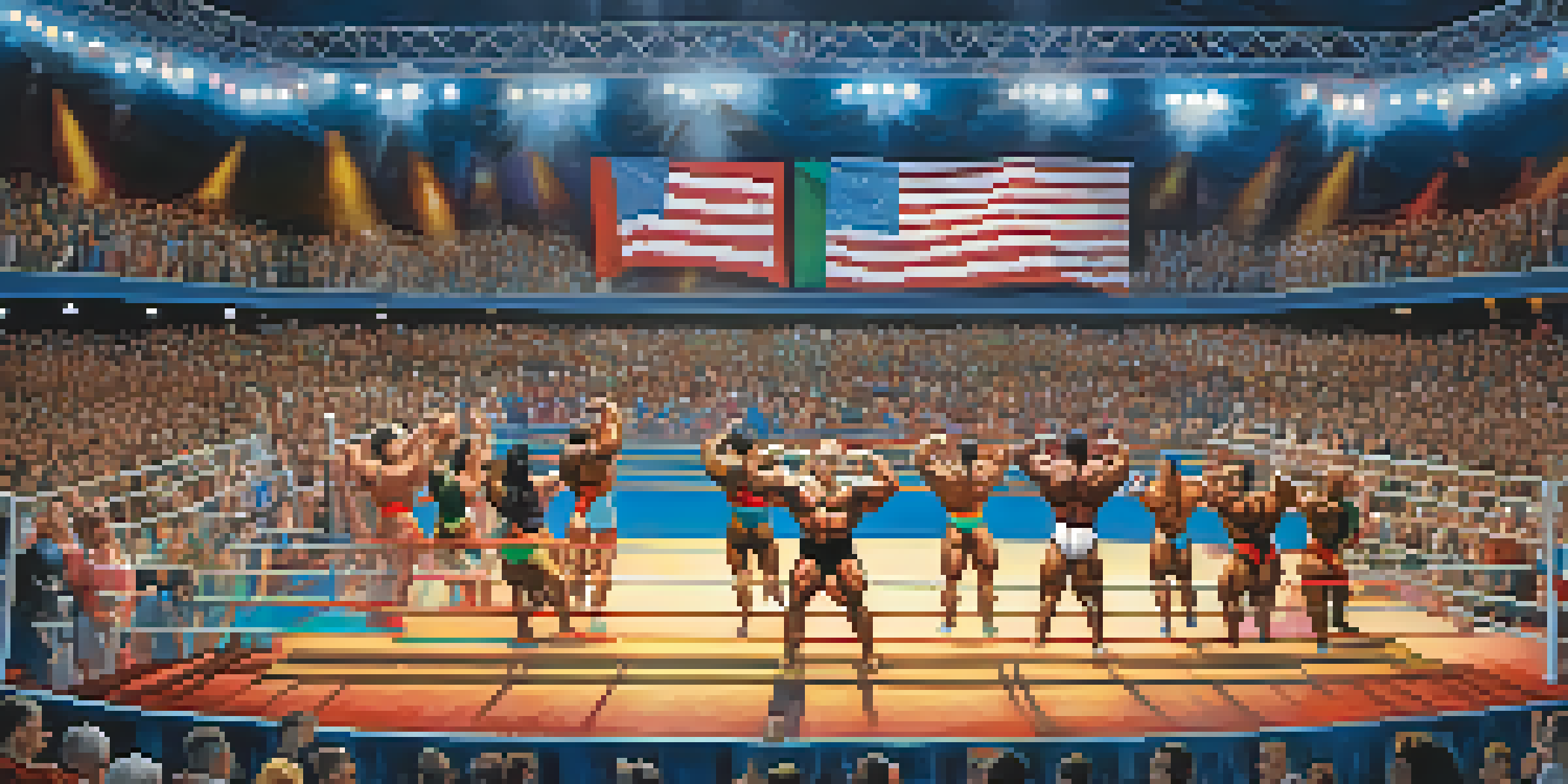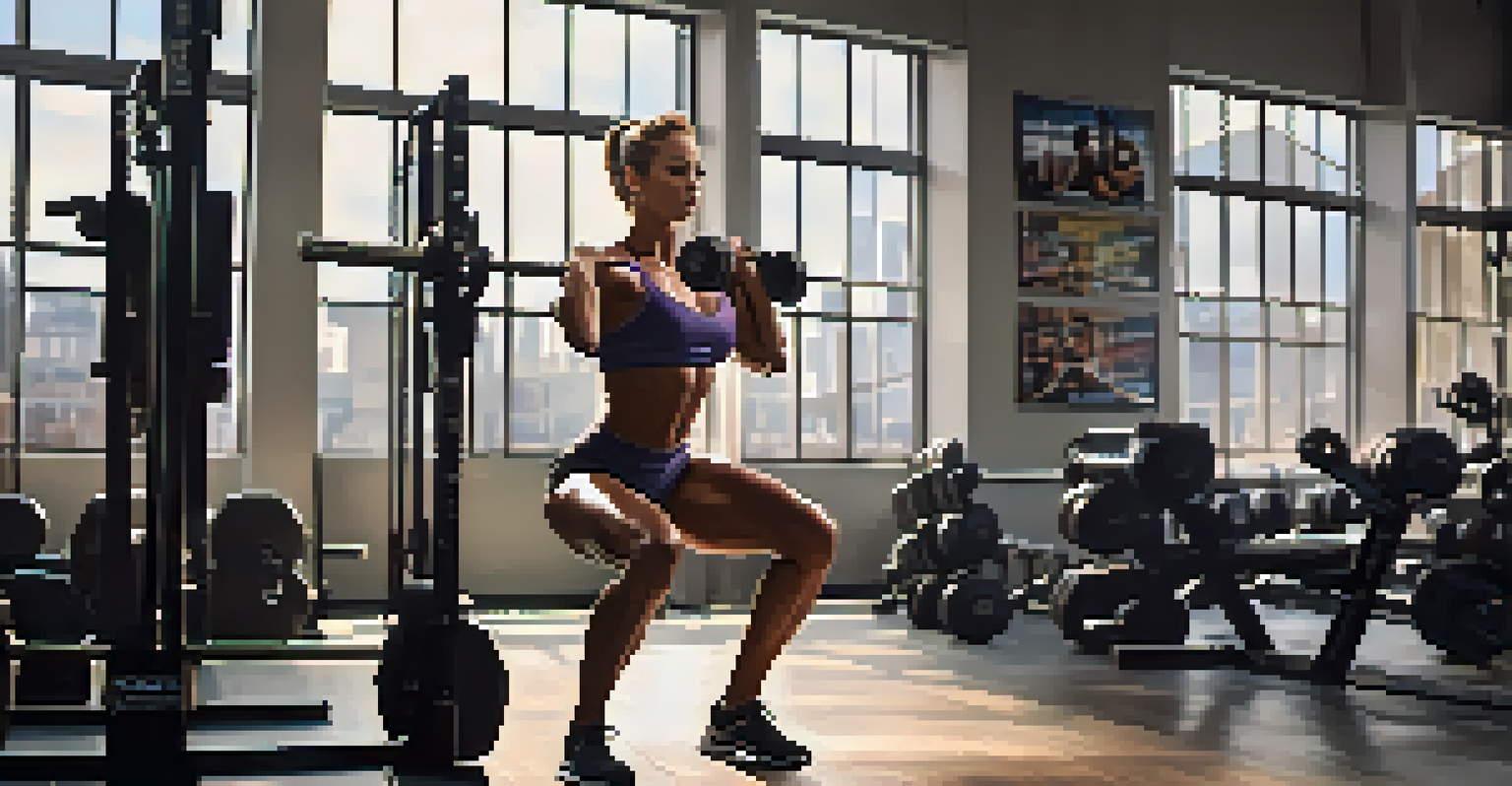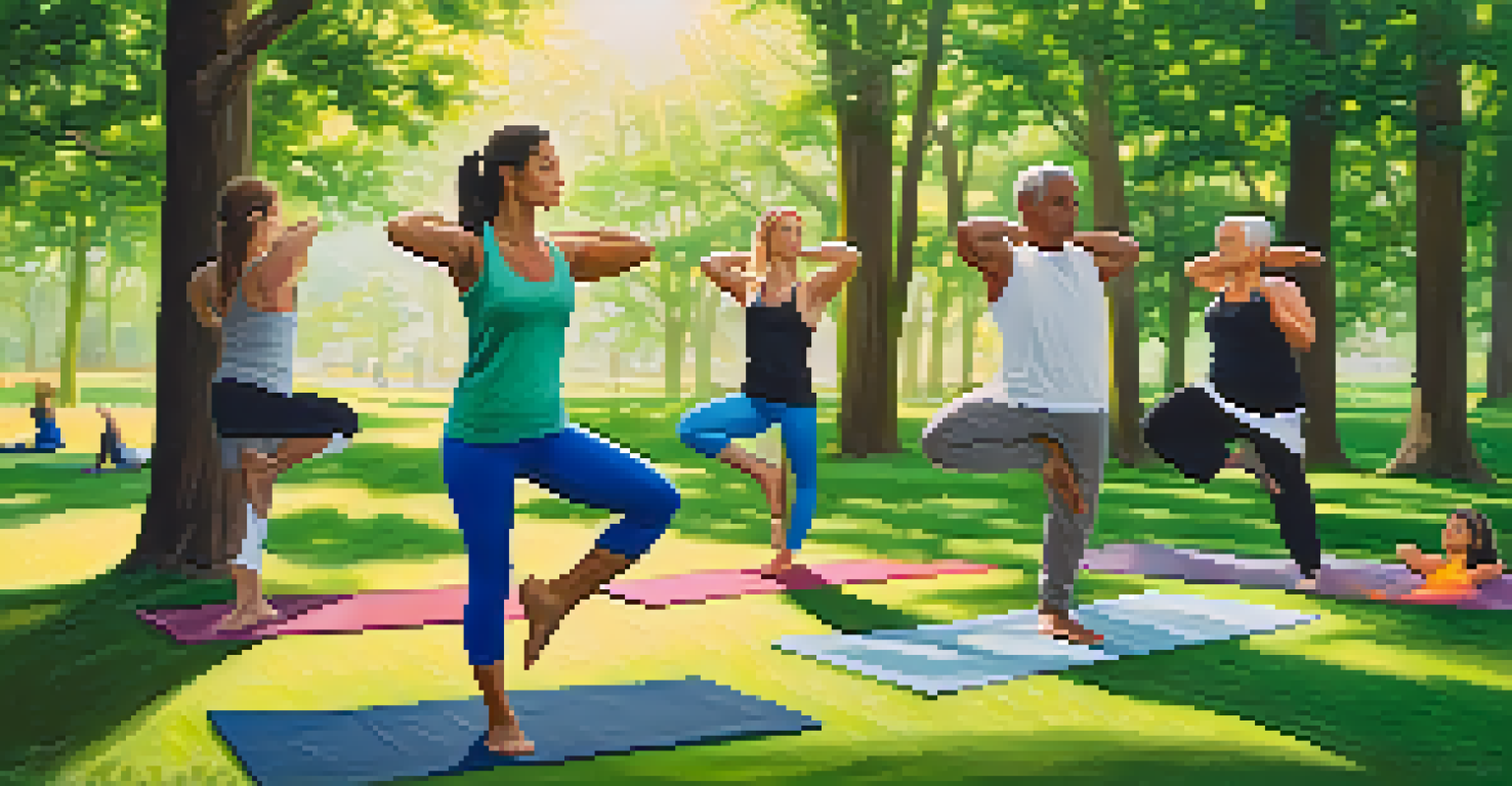The Role of Bodybuilding in Modern Asian Cultures Explained

The Rise of Bodybuilding in Asia: A Cultural Shift
In recent years, bodybuilding has surged in popularity across various Asian countries. This cultural shift reflects a growing awareness of fitness and health, moving away from traditional views on physical appearance. Many young adults now see bodybuilding not just as a sport, but as a lifestyle choice that promotes discipline and resilience.
The gym is a place where you can escape from the world and concentrate on yourself.
Countries like Japan, South Korea, and India have embraced bodybuilding with open arms, hosting competitions and showcasing local talent. Social media plays a significant role in this rise, allowing enthusiasts to share their transformation journeys and connect with like-minded individuals. The visibility of fitness influencers has also inspired more people to participate in bodybuilding.
As societal norms continue to evolve, bodybuilding is increasingly viewed as a means of self-expression. This newfound appreciation fosters a sense of community among practitioners, bridging gaps across different cultures and backgrounds, and creating an inclusive atmosphere.
Bodybuilding and Mental Health: A Positive Connection
Beyond physical gains, bodybuilding offers significant mental health benefits, which are becoming more recognized in modern Asian cultures. The process of lifting weights and achieving goals can lead to increased self-esteem and confidence. For many, this journey transforms not just their bodies, but also their minds, helping them cope with stress and anxiety.

In countries where mental health discussions are often stigmatized, bodybuilding provides a constructive outlet for emotional expression. Many bodybuilders find solace in the gym, using it as a place to escape daily pressures. This is particularly important in fast-paced urban environments where stress levels can be high.
Bodybuilding as a Lifestyle Choice
In Asia, bodybuilding is increasingly recognized not just as a sport, but as a lifestyle that promotes health, discipline, and community.
Moreover, the camaraderie formed in gyms creates support networks that further enhance well-being. As individuals share their stories and struggles, they not only motivate each other but also cultivate a culture of openness regarding mental health issues.
Gender Perspectives: Bodybuilding Beyond Stereotypes
Traditionally, bodybuilding has been viewed as a male-dominated sport, but this perception is rapidly changing in Asia. More women are now stepping into the gym, challenging stereotypes and redefining strength. This shift reflects broader societal changes where women are increasingly empowered to pursue fitness and athleticism.
Strength does not come from physical capacity. It comes from an indomitable will.
In countries like Thailand and the Philippines, female bodybuilders have gained recognition and respect, shattering old norms. Their participation encourages younger generations to embrace strength training, promoting fitness as an inclusive activity for all genders. This newfound visibility helps foster a more diverse bodybuilding community.
As women continue to break barriers in this space, they inspire others to pursue their passions, regardless of societal expectations. This movement not only uplifts individual athletes but also encourages a collective rethinking of gender roles in sports and fitness.
Cultural Influences on Bodybuilding Practices
Bodybuilding in Asia is deeply influenced by local cultures and traditions, shaping the way enthusiasts approach their training. For instance, in countries like India, ancient practices like yoga often complement bodybuilding routines, promoting a holistic approach to fitness. This blend of old and new emphasizes the importance of mental and physical harmony.
Moreover, dietary practices vary significantly across the continent, impacting how bodybuilders fuel their bodies. In Japan, for instance, a diet rich in fish and rice supports muscle recovery, while in China, herbal supplements may be favored. These unique cultural elements create diverse bodybuilding practices that reflect regional identities.
Mental Health Benefits of Training
Bodybuilding provides significant mental health benefits, helping individuals improve self-esteem and cope with stress in a supportive gym environment.
Understanding these cultural nuances helps enthusiasts appreciate the rich tapestry of bodybuilding across Asia. It highlights how fitness can be tailored to align with local customs, making the journey more relatable and meaningful for practitioners.
The Impact of Social Media on Bodybuilding Trends
Social media has revolutionized the way bodybuilding is perceived and practiced in Asia. Platforms like Instagram and TikTok allow athletes to showcase their progress, share tips, and inspire others. This visibility not only motivates individuals to start their fitness journeys but also creates a sense of accountability within the community.
As influencers gain popularity, they often set trends that ripple across the region. From workout challenges to nutrition advice, social media plays a pivotal role in shaping modern bodybuilding cultures. It fosters a sense of belonging for many, as followers find inspiration and support through shared experiences.
However, it’s important to approach social media with caution. While it can be a source of motivation, it can also lead to unrealistic expectations. Balancing online influences with personal goals and values is crucial for maintaining a healthy relationship with bodybuilding.
Bodybuilding Competitions as Cultural Events
Bodybuilding competitions have evolved into significant cultural events in many Asian countries, drawing large audiences and media coverage. These events celebrate not just individual achievements but also foster national pride, as local athletes showcase their hard work and dedication. The atmosphere during competitions is electric, uniting fans and competitors alike.
In places like South Korea and the Philippines, bodybuilding shows often feature vibrant performances and cultural displays, making them more than just contests of strength. They become celebrations of fitness and community, where participants share their journeys and connect with the audience on a personal level. This creates a deeper appreciation for the sport.
Cultural Shifts in Gender Roles
The rise of female bodybuilders in Asia is challenging traditional stereotypes and empowering women to pursue strength training and fitness openly.
As these competitions gain popularity, they also provide opportunities for aspiring bodybuilders to gain recognition and sponsorships. The visibility can be a stepping stone for many, encouraging a new wave of talent to enter the scene and further enriching the bodybuilding landscape.
The Future of Bodybuilding in Asian Cultures
Looking ahead, the future of bodybuilding in Asian cultures appears bright, with continued growth and evolution on the horizon. As fitness becomes more ingrained in daily life, we can expect to see innovative training techniques and nutritional strategies emerge. This ongoing development will likely enhance the appeal of bodybuilding for newcomers.
Moreover, as awareness of health and wellness expands, more people will likely embrace fitness as a vital aspect of their lives. With an increasing number of gyms and fitness studios popping up across urban areas, accessibility will improve, making bodybuilding more approachable for all. This democratization of fitness can only further enrich the community.

Ultimately, as bodybuilding continues to transcend cultural boundaries, it will foster greater understanding and appreciation among diverse populations. This evolution encourages individuals to celebrate their unique journeys while uniting under the common goal of health and empowerment.